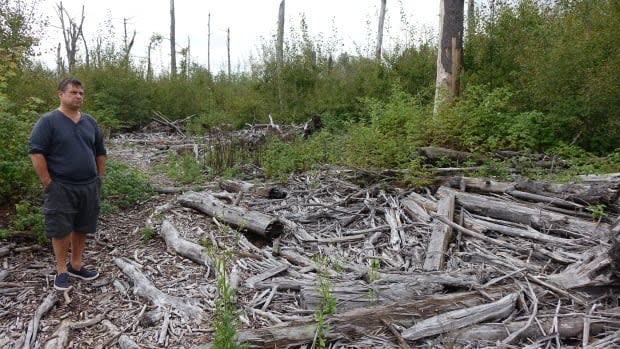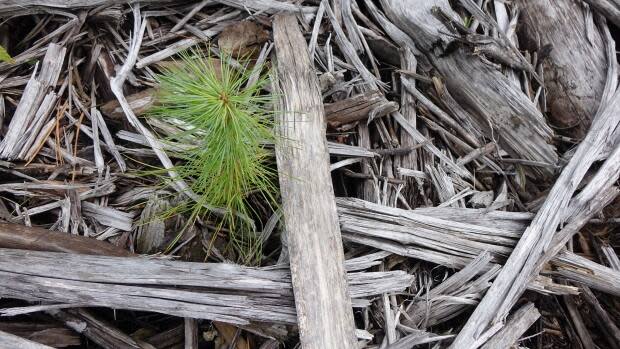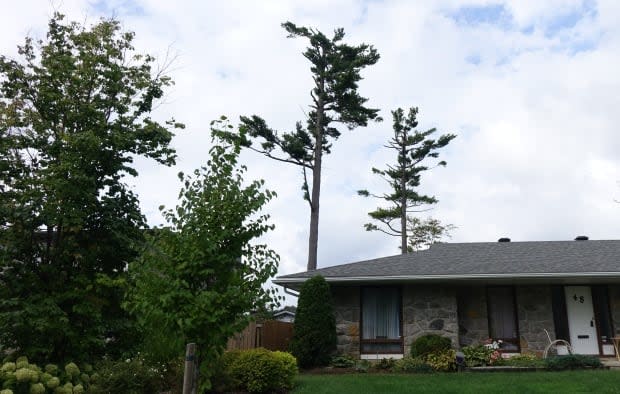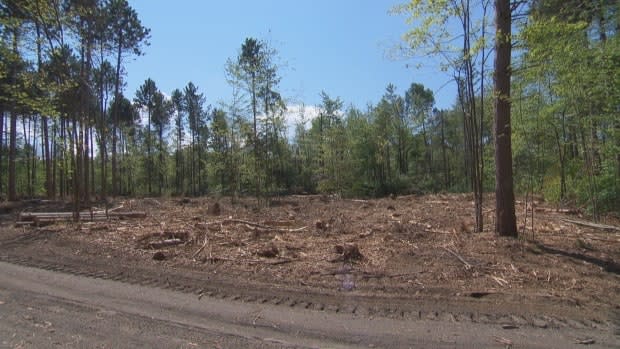Bruce Pit teeming with life after tornado felled forest, but it's not all good news

After a tornado ripped through Bruce Pit off-leash dog park in 2018 the woodland is lush with new growth, and it provides a good example of what derecho-ravaged forests on other National Capital Commission (NCC) land will likely look like in a few years.
But not all of the work done in Bruce Pit these last four years, or in NCC-owned Pine Grove and Pinhey Forest after the derecho in May, are ecological best practices, according to an urban forestry expert with the University of British Columbia.
While the NCC says it takes a mostly hands-off approach in its woodlands to allow natural processes to unfold, that expert and Tree Canada say if the commission wants its woods to better stand up to climate change, more work and maintenance are needed.
On Sept. 21, 2018, disaster struck Bruce Pit and neighbouring Arlington Woods when a tornado — described by Environment Canada as a "high-end EF-2" with winds up to 220 km/h — touched down in southern Ottawa.
The towering eastern white pines planted as a monoculture more than a century ago — the hallmark of Bruce Pit and Arlington Woods — snapped like matchsticks.
Four years later those scars still show, but they're beginning to fill in.
Poplars shoot up naturally
The fallen trees exposed the woodland floor at Bruce Pit to light, and hundreds of balsam poplars sprang up on their own. Four years later, they are 4.5 to six metres tall and too dense to walk through.
The poplars will eventually make way for longer-lived native species to move in: such as maples, hemlocks, oaks and beeches, said Andrew Almas, an associate professor and urban forestry expert at the University of British Columbia.
This is good natural work, but there are differing schools of thought about what should be done with areas stripped of trees: leave them untouched to regenerate naturally, plant trees throughout by hand, or some combination of the two.

"The most common thing you would hear is ... leave it alone, but practise a little bit of ecological restoration" by planting some trees to introduce diversity [of species, age, and genetics] to the canopy, Almas said.
A sugar maple in Ottawa is not genetically identical to a sugar maple growing in the warmer, southern end of its range in Lexington, Kentucky. Introducing southern tree DNA could give Ottawa's urban forests a better shot at long-term success as the climate warms.
Most trees planted don't check diversity boxes
About 3,600 trees have been planted in Bruce Pit and Arlington Woods since the tornado, but most of them don't achieve any diversity benchmark. They're eastern white pine seedlings grown at the same times from seeds collected in Arlington Woods by a neighbourhood man.
Almas also said the species is "noted as being a little bit on the decline." In nearby Massachusetts, a university has noted "widespread health issues" in white pines since 2009.

James O'Grady grew up in Arlington Woods and has a deep fondness for the white pine woodland he played in as a child. When he noticed years ago that some pines in the area were struggling with road salt, he approached a tree nursery in Kemptville, Ont., about how to replace them.
The nursery advised him to collect cones, and in 2015 it harvested their seeds and grew about 2,000 seedlings, O'Grady said.
Then the tornado struck. O'Grady called the nursery, and the community managed to raise enough money to buy back and plant about 1,800 of the seedlings in 2019. In 2020 O'Grady brought the nursery even more cones, and another 3,500 seedlings were grown. Earlier this year, the community bought back and planted 700 of them.

The city didn't allow most of the white pine seedlings to be planted on its land, saying they would be vulnerable to mowing by crews and that species diversity was needed, O'Grady said, but the NCC welcomed most of the remaining 2,400 seedlings with open arms.
Most were planted along paths in Bruce Pit under the NCC's direction, as well as on private properties. O'Grady said about 50 to 60 per cent have survived so far.

Aside from the community-supplied seedlings, 106 plants were provided by the NCC. They are "high-quality" trees, shrubs and vines "representative of the forest around Bruce Pit," the NCC said in an email Friday.
Most of the trees are, again, eastern white pines. Other NCC-provided tree species include maples, birches, beech, oak, spruce and hemlock, the NCC said.
"It really comes down to money," said Almas, "because if you're going to plant some genetic diversity, then you're going to have to pay for those trees and you're going to have to pay for the people that plant those trees."

Almas was also concerned about sections of felled and healthy trees alongside trails being cut down, mulched and left onsite to decompose after the May derecho in Pinhey Forest and Pine Grove, which the NCC said was necessary to protect the public and forestry crews.
The better thing to do is leave some standing dead wood to provide valuable habitat, Almas said. Indeed, the NCC left some in Bruce Pit, which it said has attracted "native and rare species" including pileated woodpeckers and flycatchers.
"The dead wood is probably the most important habitat space that we could have in the forest," Almas said.

Tree Canada is a non-profit working to get more trees in the ground and care for trees in both urban and rural spaces. Its director of operations, Michael Petryk, said more work needs to be put in to care for woodlands like Bruce Pit if we want resilient urban forests.
"I think that the staff that the NCC has is doing the best with what they have, but you're talking two or three staff members managing huge swaths of land," he said.



